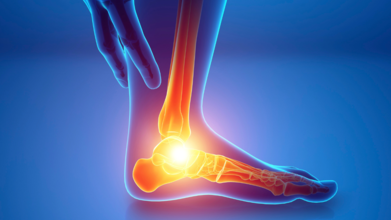- Health Conditions A-Z
- Health & Wellness
- Nutrition
- Fitness
- Health News
- Ayurveda
- Videos
- Medicine A-Z
- Parenting
- Web Stories
Are Your Kids' Melatonin Supplements Safe?

Melatonin Supplements (Credit: Canva)
Chocolates, gummies, and jellies—melatonin supplements are everywhere and they are popular among parents who struggle to get their kids to sleep. According to a 2024 study, published in JAMA Pediatrics, 68% of school-aged children and 34% of preteens in the US admitted to have taken melatonin in the past 30 days. Amidst it's growing popularity, a new study has raised alarm. Conducted by researchers in US government, this study has found that these supplements contain a lot more of this hormone than what has been claimed by their manufacturers.
But What Is Melatonin?
Melatonin—a hormone manufactured naturally in the body—regulates your sleep. Its production is triggered by darkness, while light reduces its production, prompting wakefulness. People who are insomniac or have trouble sleeping have low levels of this hormone and often turn to melatonin supplements. Melatonin also binds to receptors in your brain to reduce nerve activity. it can also reduce levels of dopamine and is involved in some aspects of day night cycles of our eyes. While supplements have become popular, there are natural food sources of Melatonin like walnuts, grapes, oats, tart cherries, cow milk amongst others.Study Discovered Inaccurate Labeling On Most Products
The study was conducted by researchers at the US Food and Drug Administration (FDA) who were motivated to conduct a study to better understand the marketplace of the widely used supplement. For the study, researchers purchased melatonin products between May and September 2023 from Walgreens, CVS, Walmart, Target, GNC, or Amazon. All these supplements, out of which 70% were marketed for the kids, were tested for the amount of melatonin they actually contained.They found that only half of the products contained the amount of melatonin suggested by the package, and two items contained none at all. One of the sample had a staggering 667% of the dosage listed on the packaging. While the average dosage of 1.7 milligrams (mg) per serving fell within safe limits for pediatric consumption, the highest dose tested—50 mg per serving—far exceeded recommended levels for children.
This research builds on previous findings including smaller studies that indicated that most melatonin supplements were inaccurately labeled. This study raises a very important flag for much-needed regulations concerning supplement standard testing to make sure labelling is accurate and safe for pediatric products," Sham Singh, MD, a sleep expert and psychiatrist at WINIT Clinic, told Health.
Do Melatonin Supplements Really Help?
There is strong evidence that suggests that taking melatonin before bed decreases the time taken to fall asleep, a concept called sleep latency, by 3 minutes. It also increased sleep time by about 30 minutes. A similar analysis of 23 studies on individuals with disease-related sleep disorders found that melatonin supplements significantly decreased sleep disturbances and sleep latency while improving both sleep duration and quality. However, while this review concluded that melatonin pills did not benefit those with mental disorders or neurological conditions like Alzheimer’s disease, other research has suggested otherwise.Could Millipedes Help Treat Pain And Parkinson’s?

Credits: Canva
In a surprising discovery that bridges the gap between creepy crawlies and cutting-edge neuroscience, researchers at Virginia Tech have identified unique compounds in millipede secretions that could pave the way for future treatments for pain and neurological diseases like Parkinson’s, depression, and schizophrenia.
Led by chemist Emily Meyers, the research team uncovered naturally occurring alkaloids in the defensive secretions of the Andrognathus corticarius, a species known colloquially as the Hokie millipede. The millipede, which lives under decomposing leaves and branches on the university’s Blacksburg campus, produces a chemical cocktail that not only deters predators but may influence neuroreceptors in the brain.
“These compounds are quite complex, so they’re going to take some time to synthesize in the lab,” said Meyers, who specializes in studying underexplored ecological sources for potential new drugs.
A Hidden Chemical Arsenal
The compounds, dubbed andrognathanols and andrognathines by Meyers’ team, belong to a class of complex alkaloids. They were discovered after researchers collected several millipedes from wooded areas on campus and analyzed the contents of their defensive glands using a suite of chemical tools.
The results were striking: some of these secretions had a disorienting effect on ants, one of the millipede’s presumed predators. But that’s not all, several of the compounds were found to interact with a neuroreceptor known as Sigma-1. This receptor has been linked to multiple brain disorders, including schizophrenia, depression, Lou Gehrig’s disease (ALS), and Parkinson’s disease.
In addition to warding off predators, the researchers discovered that the compounds may also serve a social function, possibly helping millipedes signal their location to family members in leaf-littered environments.
From Defense to Drug Discovery
This study, recently published in the Journal of the American Chemical Society, is not Meyers’ first foray into studying arthropod chemistry. She has been collaborating with entomologist Paul Marek, and together, they have previously suggested that the family of alkaloids found in millipede secretions could have significant therapeutic potential.
“Millipedes have been around for hundreds of millions of years. They’ve developed these intricate chemical defense systems, and we’re only beginning to understand their value,” said Meyers.
While the compounds show promise, the next hurdle is a familiar one in drug discovery: scalability. The compounds exist in trace amounts in the wild, and researchers need larger quantities for in-depth testing and potential pharmaceutical development.
The Road Ahead
The team is now exploring partnerships with laboratories that can synthesize the compounds in bulk, which would allow for further testing on their biological activity and medicinal properties. Meyers emphasized that while the research is still in its early stages, the potential applications are broad, from pain management to novel treatments for complex neurological conditions.
“Nature has always been a wellspring of inspiration for medicine,” said Meyers. “And sometimes, the most powerful solutions come from the smallest and most unexpected creatures, like a tiny millipede under a log.”
With this groundbreaking discovery, scientists are reminded once again that the natural world may hold secrets that, once unlocked, could transform human health in unimaginable ways.
Healthy Dad Of 2 Noticed A Bleach Smell At Home, It Turned Out To Be A Hidden Symptom Of A Life-Threatening Illness

Credits: Brain Tumor Research
A 40-year-old British father of two, Sam Suriakumar, was diagnosed with a glioma in February 2020 after experiencing unusual symptoms that he initially dismissed. One of the earliest signs was a strong, unexplained smell of bleach, which he assumed was from household cleaning.
According to his account shared with Brain Tumor Research, Suriakumar recalled, “It was a smell like ammonia or bleach, and it felt like a cleaning agent was filling up my mouth. I now know this as a symptom or a warning sign called an aura.” These auras are often linked to certain types of brain activity or seizures and can precede more severe neurological events.
Suriakumar, who was healthy and physically active, began experiencing the smell intermittently, including during a workout at the gym. “I felt like I was going to collapse, and I had to put the weight down,” he said. “I didn’t know it was a trigger warning that something was going on in my brain.”
Seizure on the London Underground Leads to Hospitalization
The pivotal moment came while he was commuting home from his office in central London. After feeling unwell throughout the day, Suriakumar boarded the subway and soon experienced a tonic-clonic seizure. “My seizure was so severe that I fell off my seat, and the contractions were so violent that I dislocated my shoulder,” he recalled.
Emergency services were alerted, and he was taken off at Balham station by station staff before being transported to St. George’s Hospital. He reportedly had another seizure in the ambulance on the way.
Despite having no previous health issues, doctors initially struggled to determine the cause. “I had some scans and a lumbar puncture. At first, nothing really showed, but a further scan revealed a mass on my brain,” Suriakumar said. It was eventually diagnosed as a glioma.
Understanding Gliomas and Their Impact
According to the Cleveland Clinic, a glioma is a type of tumor that originates in the brain or spinal cord. It includes several subtypes such as astrocytomas, ependymomas, and oligodendrogliomas. These tumors can be aggressive and may require a combination of surgery, radiation therapy, and chemotherapy. Gliomas can appear in both children and adults and often affect areas of the brain responsible for essential functions like speech, memory, and mobility.
Suriakumar’s tumor was described as growing like a “cobweb,” making it difficult to remove without damaging critical areas of the brain. Doctors informed him that only about 40 percent of the tumor could be removed surgically.
Ongoing Treatment and Health Setbacks
Following the diagnosis, Suriakumar’s life changed dramatically. He was unable to work or drive and had to navigate the challenges of treatment while entering the first COVID-19 lockdown. In July 2023, while attending a wedding in Brazil, Suriakumar learned that his tumor had grown after two years of stability.
He underwent surgery after returning to the UK, followed by a biopsy, radiotherapy at the Royal Marsden in Sutton, and a year-long course of chemotherapy. “I was really sick during chemotherapy,” he said, noting a 44-pound weight loss.
Looking Ahead: Monitoring and Milestones
Despite the difficult treatment journey, Suriakumar has focused on regaining his strength and celebrating milestones. In April 2025, he participated in a fitness competition in Belgium. He recently marked his 40th birthday, a significant personal goal. “When I was first diagnosed, I didn’t even think I’d see the end of the week. Turning 40 was a massive dream for me,” he said.
His most recent scan, conducted in May 2025, showed stability in the tumor. He now undergoes check-up scans every six months.
“I couldn’t speak, hear or understand what was going on,” he said of his early days post-diagnosis. “But I’ve come this far, and I’m still here.”
Suriakumar continues to raise awareness about the early signs of brain tumors and the importance of not ignoring unusual bodily signals, no matter how minor they may seem.
Understanding Chronic Regional Pain Syndrome: When Pain Persists Beyond Injury

Imagine stubbing your toe and feeling like it's been set on fire... for months. Now imagine that burning sensation spreading to your entire leg, and instead of easing over time, it gets worse. That’s Chronic Regional Pain Syndrome (CRPS). It is a condition as problematic as its name suggests and yet, bizarrely, not talked about enough.
Chronic Regional Pain Syndrome is a long-term, often debilitating condition that typically affects a limb like an arm, hand, leg, or foot after an injury, surgery, stroke, or even something as mundane as a sprain. It’s like your nervous system gets stuck in panic mode.
There are two types:
Type 1 (Reflex Sympathetic Dystrophy): Happens without a confirmed nerve injury.
Type 2 (Causalgia): Involves a definite nerve injury.
Regardless of type, the result is the same: persistent, severe pain way out of proportion to the initial injury, often with odd side effects.
Why CRPS Is No Ordinary Ache
If pain had a reality show, CRPS would be the melodramatic diva. The pain can feel like burning, stabbing, throbbing, or shooting. It’s often accompanied by:
- Swelling
- Changes in skin colour or temperature (hot and red one minute, cold and blue the next)
- Excessive sweating
- Hair and nail changes
- Muscle weakness and spasms
It can also cause allodynia, which is a fancy term for when even a gentle breeze or the touch of fabric feels like torture.
Worst of all? The pain doesn’t stay neatly in one place. It may start in a toe and sneakily creep up the leg or even jump to the other side of the body.
Why It Happens
Ask ten doctors what causes CRPS, and you might get eleven guesses. The exact cause isn’t fully understood, but it seems to involve:
- A malfunction in the peripheral and central nervous systems
- Abnormal inflammatory responses
- Dysfunction of blood vessels and pain pathways
- It’s the body’s overreaction to trauma, like a car alarm blaring long after the bump is gone.
Life with CRPS
Chronic pain doesn’t just hurt the body; it impacts daily life. CRPS affects every layer of existence:
- Mental health: Anxiety, depression, and even PTSD-like symptoms are common.
- Mobility: Limited range of motion and muscle weakness may lead to reliance on walking aids or wheelchairs.
- Sleep: Pain that flares up at night makes good sleep feel like a luxury.
- Work and relationships: Jobs may be lost, plans cancelled, social life drained.
What adds to the distress? Many people with CRPS report feeling disbelieved, even by medical professionals. It’s an invisible illness with painfully visible consequences.
How Do You Treat It?
There’s no one-size-fits-all cure, but the goal is to reduce symptoms and improve quality of life. Treatment is usually multi-pronged:
- Medications: Pain relievers, nerve-blockers, antidepressants, anticonvulsants
- Physical therapy: To restore mobility and function
- Occupational therapy: To adapt daily tasks
- Psychological support: Pain management techniques like CBT and mindfulness
- Interventional approaches: Nerve blocks, spinal cord stimulation, or ketamine infusions in severe cases
Early diagnosis is key. The longer CRPS goes untreated, the more entrenched and resistant it becomes.
CRPS Is Real, Rare, and Relentless
Though CRPS is considered rare, with estimates suggesting around 5 to 26 cases per 100,000 people annually, it’s devastating for those who live with it. It often shows up uninvited, stays far too long, and brings along a suitcase full of complications.
But awareness is growing. Support groups, research into new treatments, and advocacy efforts are helping give a voice to people who’ve lived in silence. With the right treatment plan, support system, and a dash of stubborn hope, many people find ways to live well despite the pain.
© 2024 Bennett, Coleman & Company Limited

